Lemon Pound Cake
This post may contain affiliate links. Read my full disclosure policy.
This lemon pound cake is the ultimate dessert for lemon lovers.
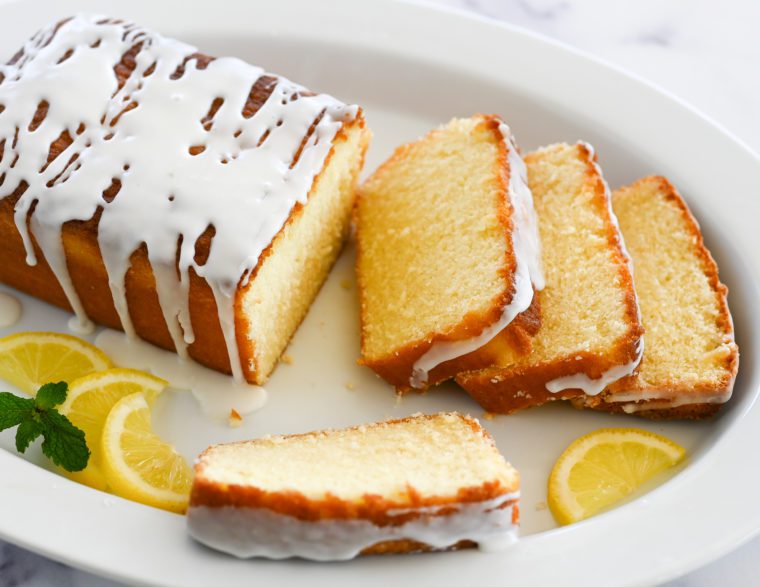
Calling all lemon lovers! This lemon pound cake is a dessert made just for you. The recipe incorporates both lemon zest and lemon juice into the cake batter, infusing the cake with a lovely lemon flavor. But the real magic happens after baking — the cake is generously doused with lemon syrup and then drizzled with a tart lemon glaze, delivering an intense burst of lemon flavor with every bite. The recipe yields two ultra-moist loaves that stay fresh for days on the countertop or can be frozen for later. If you’d like to switch things up, try my popular lemon poppyseed cake and lemon blueberry pound cake variations. A big thank you and shoutout to Karen Tannenbaum, one of my longtime readers, for inspiring this wonderful recipe!
What You’ll Need To Make Lemon Pound Cake
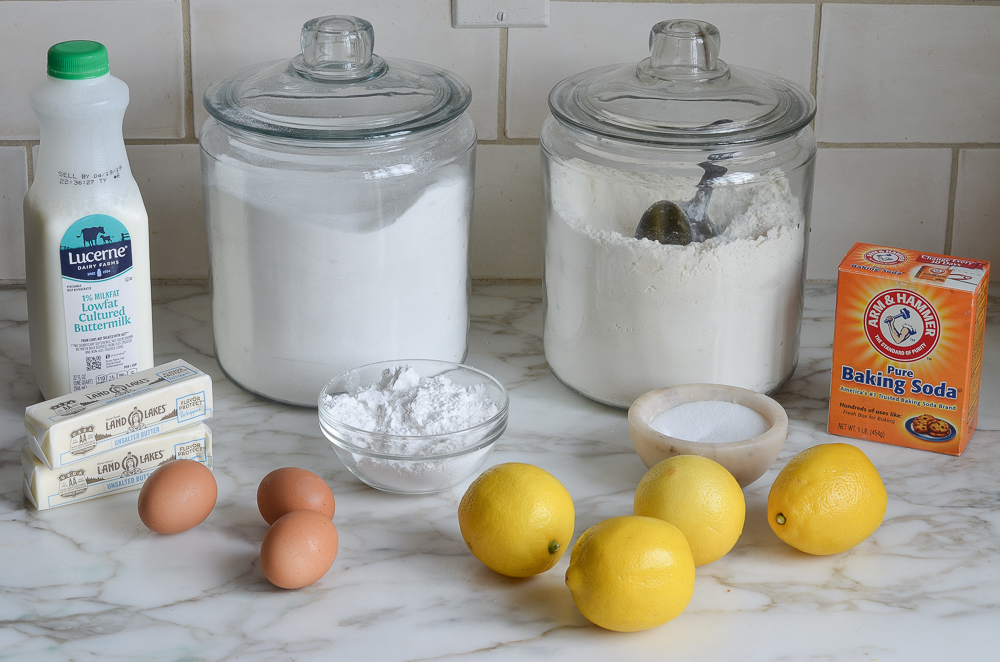
STEP-BY-STEP INSTRUCTIONS
Start by zesting and juicing your lemons. And be sure you zest the lemons first, otherwise, it will be impossible once they are juiced. The best tool for zesting is a rasp grater but any fine grater will do.
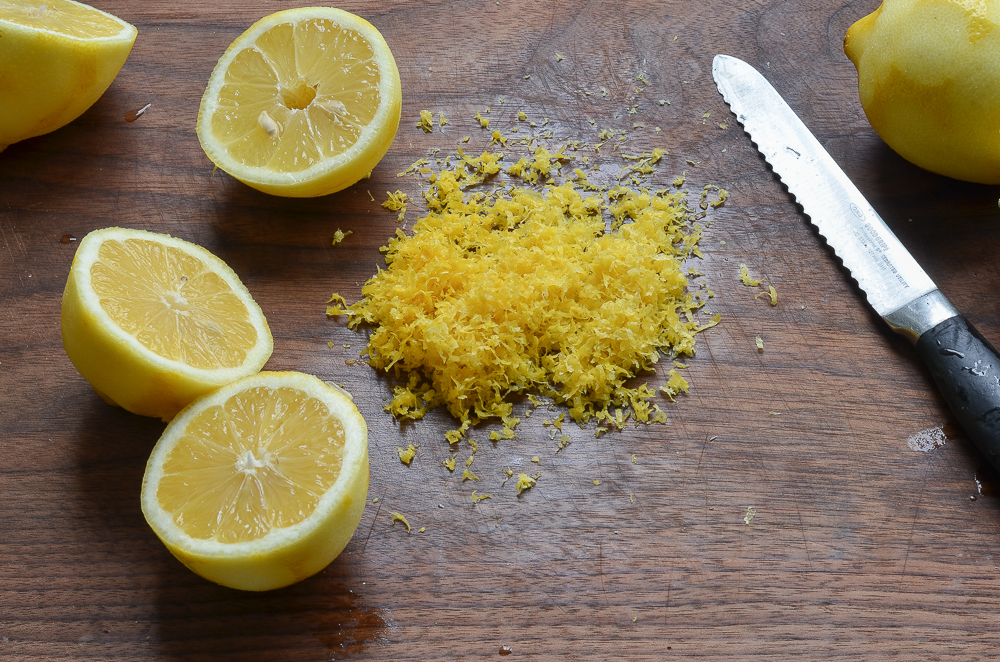 Combine the flour, salt, and baking soda in a mixing bowl. I always add dry ingredients in little piles so I don’t forget what I’ve already added.
Combine the flour, salt, and baking soda in a mixing bowl. I always add dry ingredients in little piles so I don’t forget what I’ve already added.
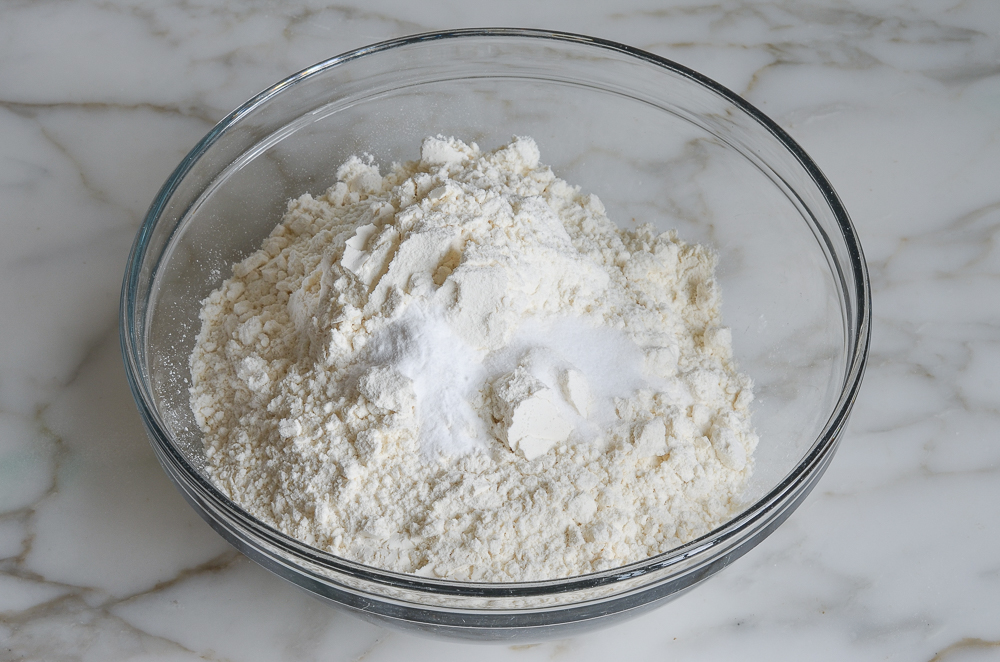 Whisk and set aside.
Whisk and set aside.
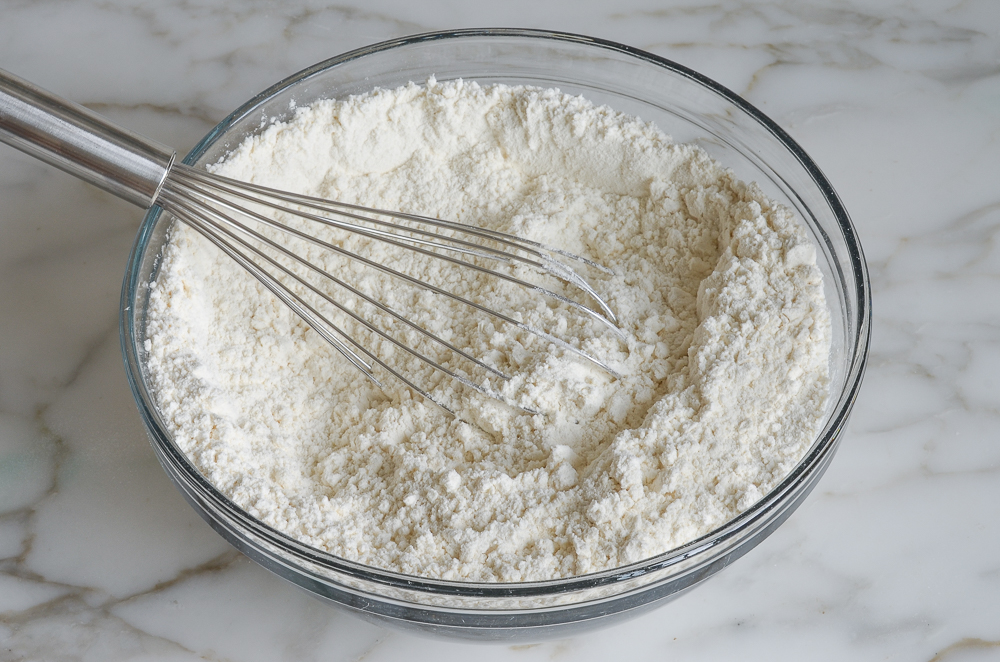
In another bowl, whisk together the buttermilk, lemon zest, and lemon juice. Set aside.
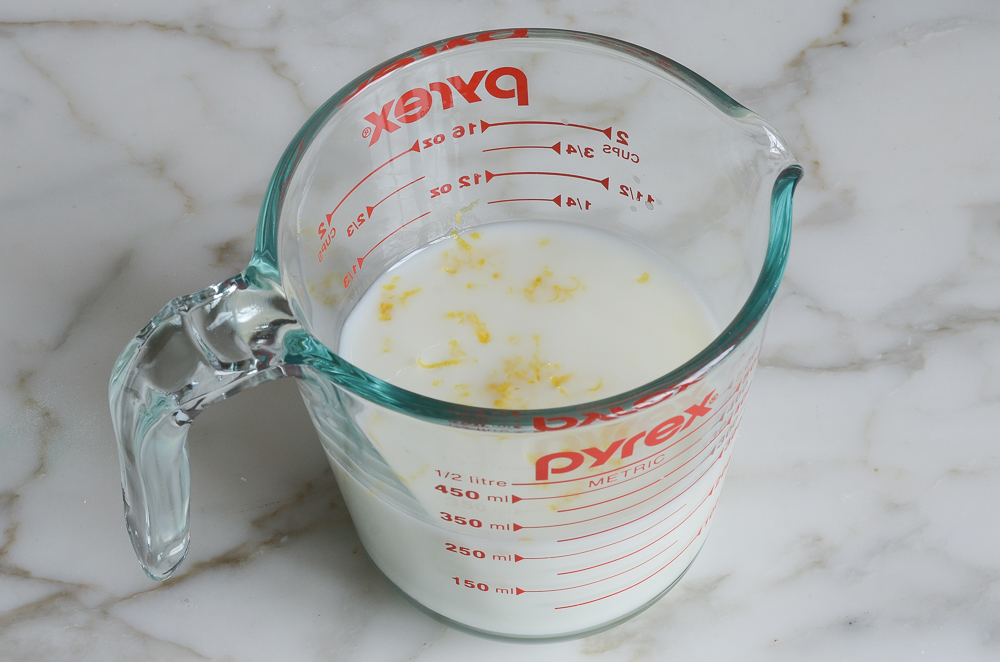
In the bowl of an electric mixer fitted with the paddle attachment (or beaters), cream the butter and sugar on medium speed until light and fluffy, 3 to 4 minutes.
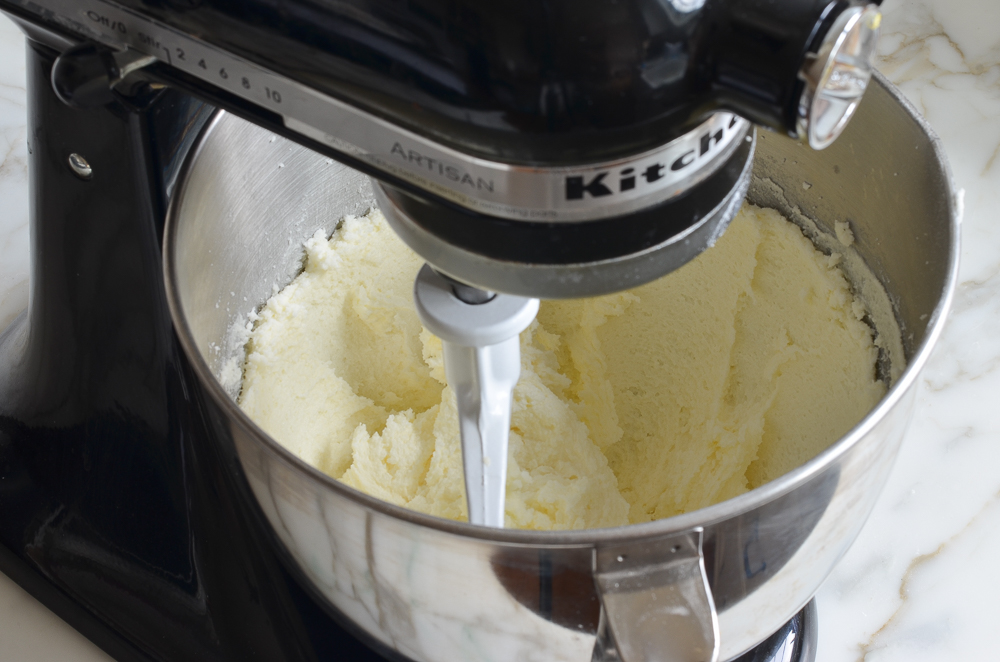
Scrape down the sides of the bowl, then beat in the eggs one at a time, beating well after each addition. Scrape down the sides of the bowl again.
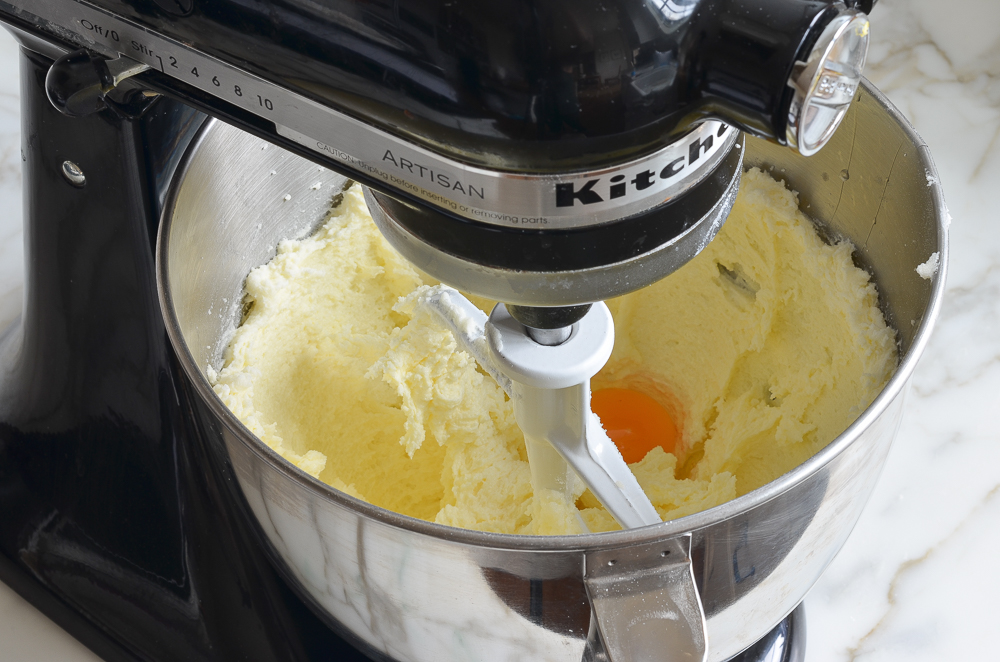
With the mixer on low speed, beat in one-quarter of the flour mixture, then one-third of the buttermilk mixture. Beat in another quarter of the flour, then another third of the buttermilk mixture. Repeat with another quarter of the flour and the remaining buttermilk mixture. Finally, beat in the remaining flour mixture.
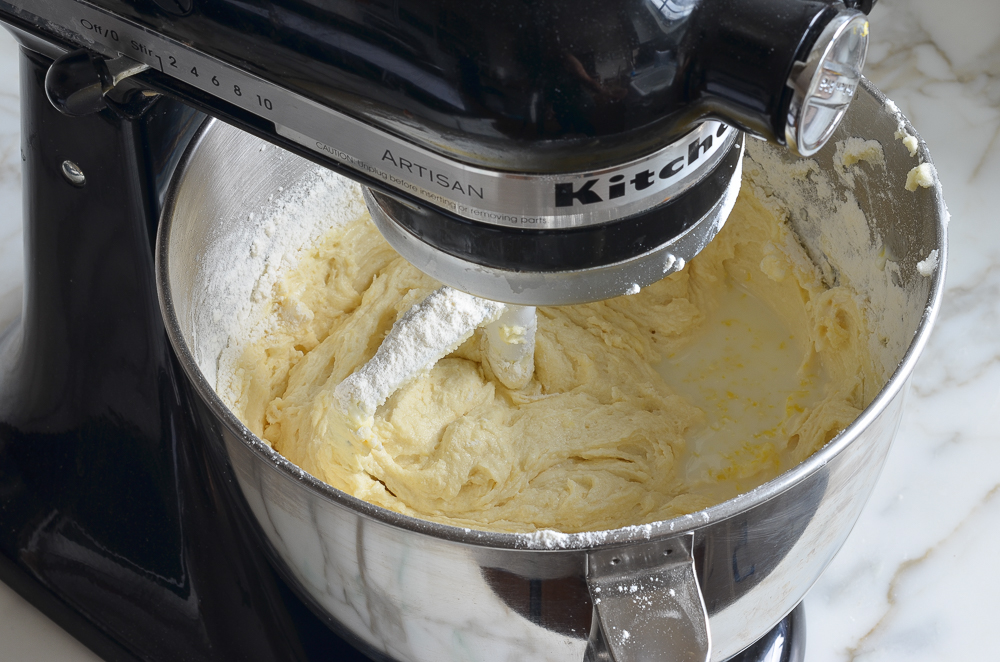
Scrape down the sides of the bowl, and give a quick mix to make sure all of the ingredients are well-incorporated.
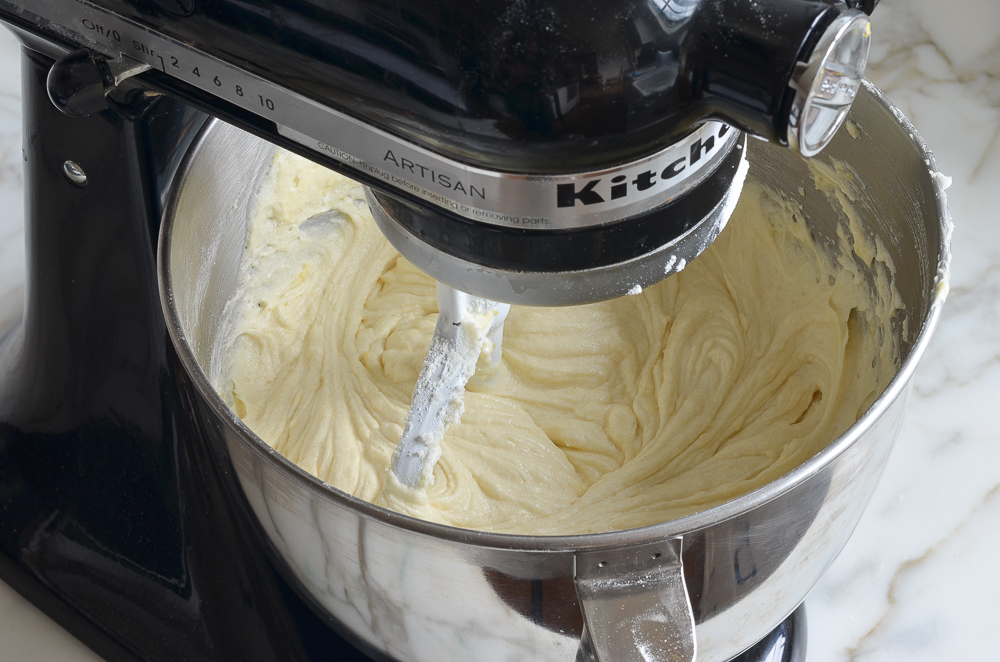
Transfer the cake batter to the prepared pans and smooth with a rubber spatula.
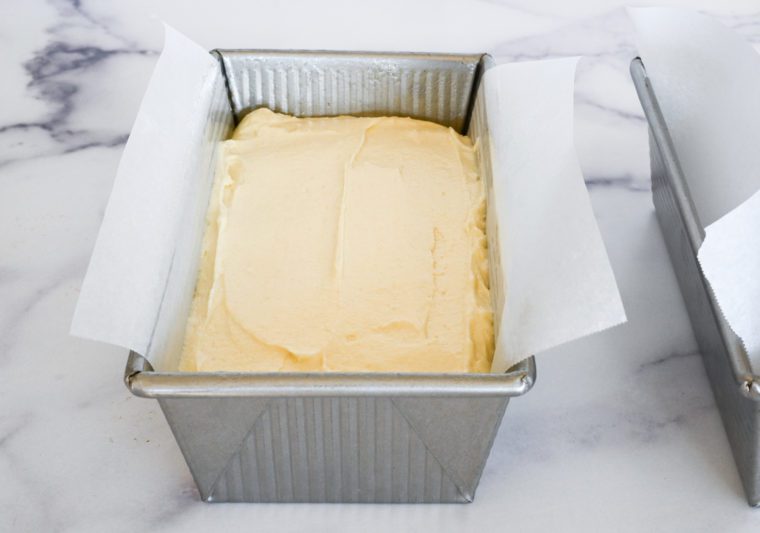
Bake for 55 to 65 minutes, or until the top is golden and a tester comes out clean.
Set the cakes on a cooling rack, and cool in the pans for 10 minutes.
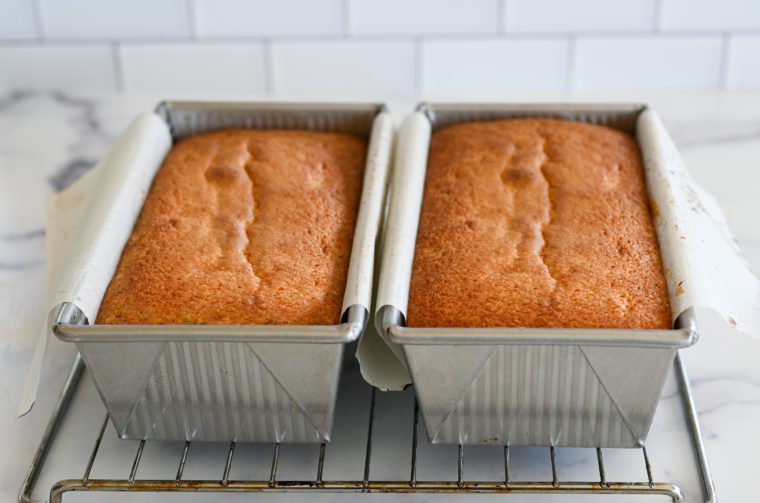
Carefully run a knife along the unlined sides of the pans to loosen the cake from the pan. Using the parchment slings, lift the cakes out of the pans and place onto the rack, leaving the parchment paper in place under the cakes. Let cool for about 1 hour.
When the cakes are almost cool, make the syrup. Combine the water and sugar in a saucepan and bring to a boil. Remove from the heat and stir in the lemon juice.
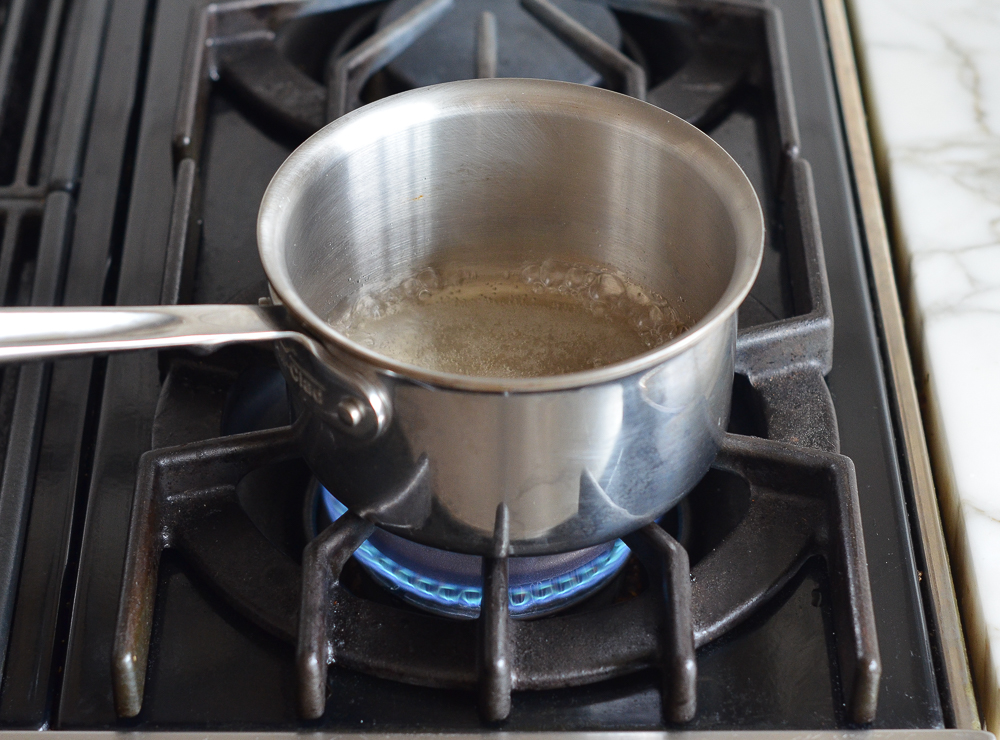
To make the glaze: in a medium bowl, whisk together the confectioners’ sugar and lemon juice. Add more confectioners’ sugar or lemon juice as necessary to make a thick but pourable glaze (it should be a little thicker than you’d think, about the consistency of molasses or honey).
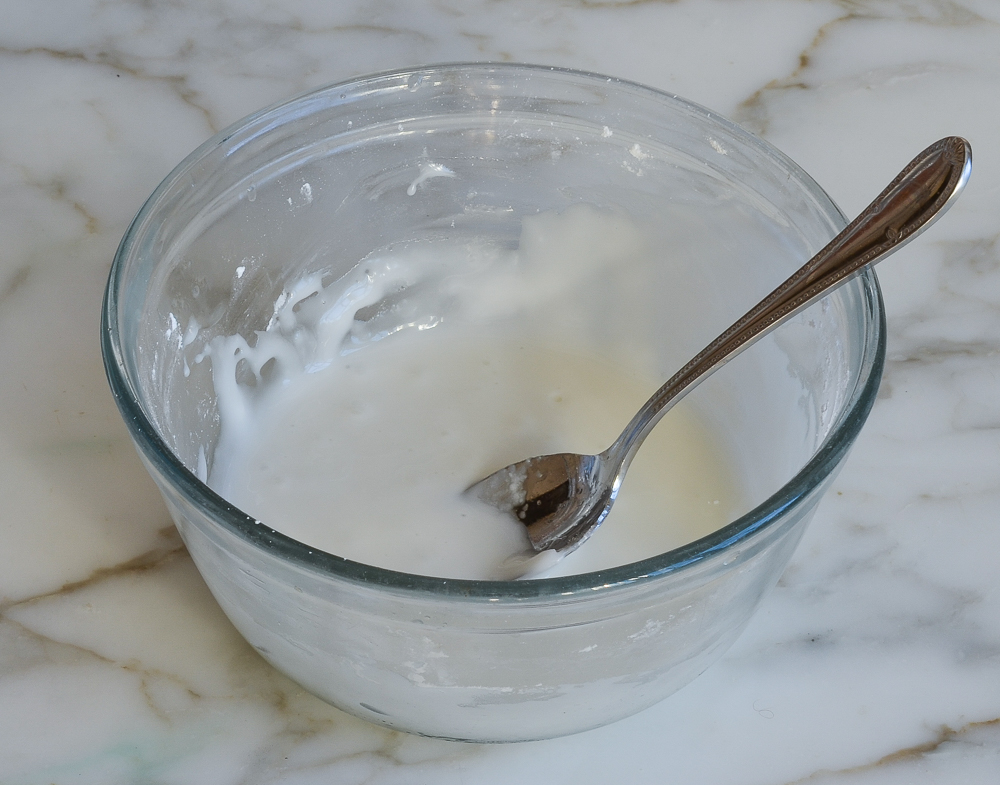
When the cakes are cool, carefully transfer them to serving platters. Gradually brush the warm syrup all over the cakes, including the sides, letting it soak in as you go.
Finally, spoon the glaze over the top of the cake, letting it drip down the sides.
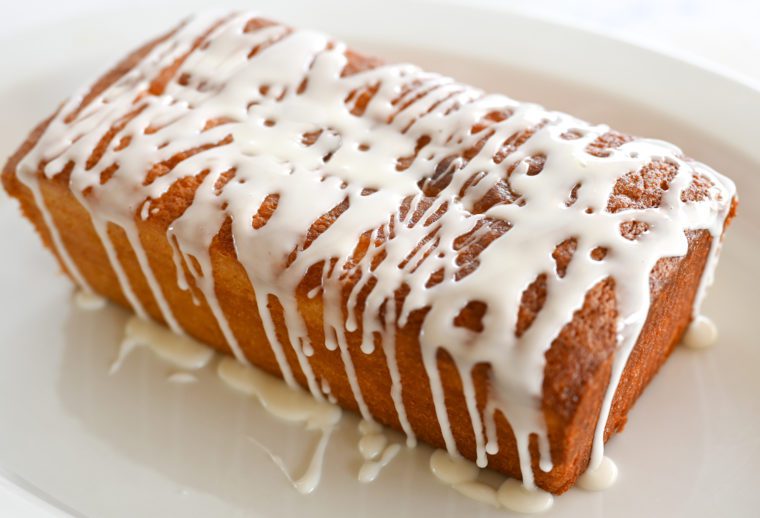
Let the cakes sit for about one hour to allow the glaze to set before serving.
How To Freeze Lemon Pound Cake
The cakes can be frozen without the glaze for up to 3 months. After they are completely cooled, double-wrap them securely with aluminum foil or plastic freezer wrap, or place them in a heavy-duty freezer bag. Thaw overnight on the countertop before serving. (Add the syrup before the cake is frozen and add the glaze after the cake is thawed.)
Note: This recipe was updated in 2022; to see the original version, click here.

You May Also Like
- Warm Lemon Pudding Cakes
- Lemon Poppy Seed Muffins
- Lemon Bars
- Cake Pans to Cookie Sheets: 16 Essential Baking Pans
Lemon Pound Cake
This lemon pound cake is the ultimate dessert for lemon lovers.
Ingredients
For the Cake
- 3 cups all-purpose flour, spooned into measuring cup and leveled-off with a knife
- ½ teaspoon baking soda
- ½ teaspoon salt
- 1 cup buttermilk (low-fat is fine) (see note)
- 2 tablespoons (packed) grated lemon zest (see note)
- 2 tablespoons fresh lemon juice
- 2 sticks (1 cup) unsalted butter, softened
- 2¼ cups granulated sugar
- 3 large eggs
For the Syrup
- 2 tablespoons water
- 2 tablespoons granulated sugar
- 2 teaspoons fresh lemon juice
For the Glaze
- 1 cup confectioners' sugar
- 2 tablespoons fresh lemon juice
Instructions
- Preheat the oven to 350°F and set an oven rack in the middle position. Spray two 8½ x 4½-inch loaf pans with nonstick cooking spray. Line the long sides of the pans with parchment paper “slings” and spray lightly with nonstick cooking spray again.
- In a medium bowl, whisk together the flour, baking soda and salt. Set aside.
- In another bowl, whisk together the buttermilk, lemon zest and lemon juice. Set aside.
- In the bowl of an electric mixer fitted with the paddle attachment (or beaters), cream the butter and sugar on medium speed until light and fluffy, 3 to 4 minutes. Scrape down the sides of the bowl, then beat in the eggs one at a time, beating well after each addition. Scrape down the sides of the bowl again.
- With the mixer on low speed, beat in one-quarter of the flour mixture, then one-third of the buttermilk mixture. Beat in another quarter of the flour, then another third of the buttermilk mixture. Repeat with another quarter of the flour and the remaining buttermilk mixture. Finally, beat in the remaining flour mixture. Scrape down the sides of the bowl, and give a quick mix to make sure all of the ingredients are well-incorporated.
- Divide the thick batter into the prepared pans and smooth with a rubber spatula. Bake for 55 to 65 minutes, or until the top is golden and a tester comes out clean.
- Set the cakes on a cooling rack, and cool in the pans for 10 minutes. Carefully run a knife along the unlined sides of the pans to loosen the cake from the pan. Using the parchment slings, lift the cakes out of the pans and place onto the rack, leaving the parchment paper in place under the cakes. Let cool for about 1 hour.
- When the cakes are almost cool, make the syrup. Combine the water and sugar in a saucepan and bring to a boil. Remove from the heat and stir in the lemon juice.
- When the cakes are cool, carefully transfer them to serving platters.
- Gradually brush the warm syrup all over the cakes, including the sides, letting it soak in as you go.
- To make the glaze: in a medium bowl, whisk together the confectioners' sugar and lemon juice. Add more confectioners' sugar or lemon juice as necessary to make a thick but pourable glaze (it should be a little thicker than you'd think, about the consistency of molasses or honey). Spoon the glaze over the top of the cake, letting it drip down the sides. Let the cakes sit for about one hour to allow the glaze to set before serving.
- Note: If you’d like to make your own buttermilk, check out the easy method here.
- Note: You'll need 4 to 5 large lemons for the entire recipe.
- Make-Ahead/Freezer-Friendly Instructions: The cakes can be made up to 1 day ahead of time and stored in a cake dome or airtight container at room temperature. They can also be frozen (without the final glaze) for up to 3 months. After they are completely cooled, double-wrap securely with aluminum foil or plastic freezer wrap, or place them in a heavy-duty freezer bag. Thaw overnight on the countertop before serving. (Add the syrup before the cake is frozen and add the glaze after the cake is thawed.)
Nutrition Information
Powered by ![]()
- Per serving (16 servings)
- Serving size: 1 slice
- Calories: 313
- Fat: 7g
- Saturated fat: 4g
- Carbohydrates: 59g
- Sugar: 40g
- Fiber: 1g
- Protein: 4g
- Sodium: 143mg
- Cholesterol: 51mg
This website is written and produced for informational purposes only. I am not a certified nutritionist and the nutritional data on this site has not been evaluated or approved by a nutritionist or the Food and Drug Administration. Nutritional information is offered as a courtesy and should not be construed as a guarantee. The data is calculated through an online nutritional calculator, Edamam.com. Although I do my best to provide accurate nutritional information, these figures should be considered estimates only. Varying factors such as product types or brands purchased, natural fluctuations in fresh produce, and the way ingredients are processed change the effective nutritional information in any given recipe. Furthermore, different online calculators provide different results depending on their own nutrition fact sources and algorithms. To obtain the most accurate nutritional information in a given recipe, you should calculate the nutritional information with the actual ingredients used in your recipe, using your preferred nutrition calculator.

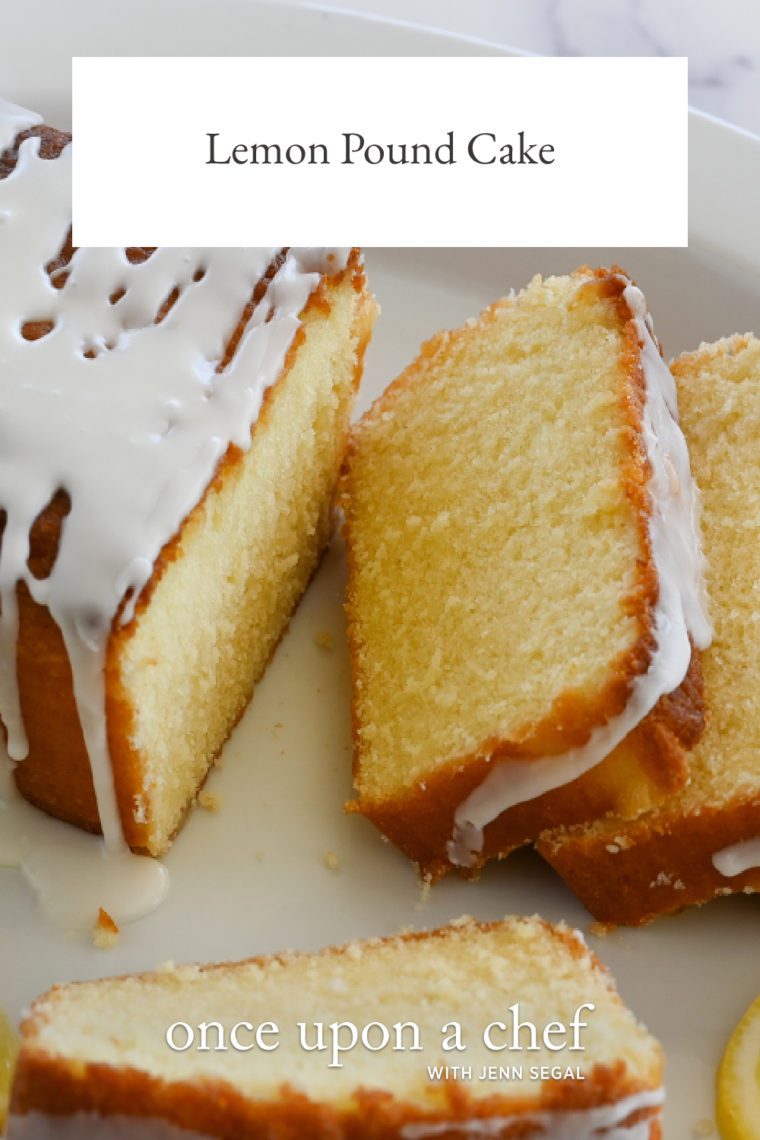
I LOVE Lemon in just about everything and I was excited to find this recipe. HOWEVER, after making it and following the instructions to the letter (including the purchase of buttermilk in lieu of a milk/vinegar substitution) I will NEVER make this recipe again!! This pound cake was extremely DRY and lacked the typical lusciousness of a pound cake. In fact, I threw more than half of it out because when taking a bite, and after chewing it, I ‘exhaled’ crumbs!! Even the drizzle looked weak and MY cake looks EXACTLY like the one pictured – including the same Bundt pan!! You really MISSED the MARK on this recipe!!
Hi Anita, I’m sorry this recipe was such a fail for you! Dryness is usually caused by measuring the flour incorrectly. Did you use the spoon and level method to measure the flour? Even a few extra ounces can make a big difference. This article/video explains it nicely.
I have to disagree as mine is very moist and delicious and looks exactly like the pictures posted. thank you again Jenn.
I tried it today. It’s really good. Only I would like it better if it was a bit less sweet. But overall, it’s a reliable recipe. I did’t finish off with the icing part. Nevertheless it was still good. Thanks for sharing.
wow, take it easy. It’s just a cake
Mine came out beautiful and SO delicious! The many five-star reviews are not exaggerating one bit. A perfect combination of lightly crunchy outside and yummy, lemony, moist, satisfying cake inside. The syrup and glaze add an amazing fresh lemon taste that’s just sweet enough to remove any bitterness. I was bad and cut a slice as soon as it was glazed to eat with my morning coffee – (I did everything else last night) and wow! It will be snarky, but— maybe it was someone else who MISSED the MARK above?
Hi Jenn,
I made this pound cake for a church meeting. (Check my review on the lemon squares – they were for the same meeting). This recipe was easy to make and the instructions easy to follow. I took the whole cake sliced to the meeting on a lovely platter and waited to see how it would fair against all the other delicious looking morsels. It took a few beats, but then the cake started to move. People were going back for seconds and were taking slices home. I enjoyed a slice at the meeting with a cup of tea. It was extremely delicious with just the right amount of sweetness and tartness from the lemons. I took a piece home for my husband and fortunately he, too, was able to experience it’s deliciousness. (He had it before our daughter got home – see Lemon Square review.) This recipe is a keeper and will certainly be made again!
Fabulous and simple. Although I did a few steps out of order and I was out of confection sugar, it was still great tasting. Have a lemon tree that was abundant with lemons so searching for that recipe that would use as many as possible. But we couldn’t wait for it to cool, and ate it warm with the syrup. SO good!! Definitely will try this again.
Can this recipe be halved? If so what kind of pan would you use?
Sure, Debbi — You can bake it in an 8-1/2 by 4-1/2-inch loaf pan. It should take about 45 minutes plus or minus to bake, so keep an eye on it. Enjoy!
Would I be able to make this without an electric mixer? I don’t have one and want it to still taste good!
Hi Madeline, do you have a handheld mixer? A mixer is important for this one but a handheld version will work. You will just need to increase the speed a little.
This was an absolutely fabulous recipe! I added lemon emulsions to kick it up a notch and a little vanilla but this was perfect! No problem with coating the pan with butter and sugar either. Nice variation from butter/ flour.
Just took this ‘cake’ out of the oven–let it rest, and ran a butter knife and plastic spatula around the edges….what a disaster!! Looks aweful! I don’t care how it tastes….
So sorry you weren’t happy with this, CJ — did the cake stick to the pan?
I just discovered this recipe through google search and it sounds like exactly what I have been looking for. Thank you very much for sharing this and your instructions are so great. I will be signing up for your newsletter if you have one. Have a happy day!
This is the 2nd time I’ve made this cake and it was phenomenal both times. This recipe is a keeper!! Thank you so much <3
the actual cake itself is moist, delicious, and lemony. the only problem i encountered was that the cake wanted to stick to the pan, and by the time i got most of it out, it was rather deformed. overall, i would totally recommend this cake. the thing i would change is rubbing the pan with butter (definitely not with crisco!) and then sprinkling flour on that.
Did I miss what temp this should be baked at? And are you using confectioners/powdered sugar to dust the bundt pan or granulated sugar?
Thank you!
Hi Judy, the cake should be baked at 350°F. And the pan should be dusted with granulated sugar. Hope that helps and that you enjoy!
Hi Dorothy, Glad you liked the cake itself but sorry that it stuck to the pan! If you want to make this again, I’ve developed a different method that uses two 8½ x 4½-inch loaf pans and with these, you won’t have to worry about sticking!